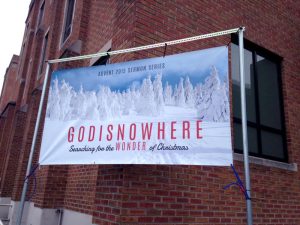CocoRosie’s music has been labeled variously as New Weird America, Experimental, Hip-Hopera and Freak Folk. The latter sub-genre, others have noted, typifies the metamodern cultural sentiment.
Bianca and Sierra Casady have been performing as CocoRosie since 2003, writing music that often evokes a kind of ethereal mythosphere and recognizes childlike innocence as a source of wisdom. Their songs, often autobiographical, seem to presence that particular kind of openness that one associates with childhood. On the topic of death, one of the sisters said,“I feel so comforted by the mystery of it. … As children we have not yet decided and differentiated which things are light and dark so there is this murky experience of what’s happening; we haven’t decided what is good and bad yet.”
Within the dreamy scapes and girlish textures are plenty of dark alleys. The world portrayed in many of their songs is fairytale-like, but often in the Red Riding Hood sense – that is, not necessarily safe, or, as one reviewer put it, unnerving but oddly comforting.
In this sense, the music is evocative of the metamodern penchant for welcoming the rough, incomplete and messy sides of the whole human showcase. The awkward, the awesome (as in the mysterium tremendum) and points in between are all on-board.
Also arguably metamodern is the oddball artistry of combining Bianca’s pinched, hyper-girlish voice (somehow managing to out-Björk Björk) and Sierra’s classically trained, operatic lyricism – the tiny (minimalism) and the epic (maximalism) coming together, in a sense. Add to this the juxtaposition of a traditional wooden flute against a beat boxer and a synthy background, and it’s as if the mass of incongruities seem to wedge new air into one’s brain space. Put more succinctly, as someone commented on the video of their performance of “After the Afterlife” (above):
“This song is like angels fucking in my ears. how else does one explane it?” [sic – in fact ‘sics’ on all of these quotes]
Another commenter wrote:
“lovely music, it’s beautiful and ugly at the same time. they are both so unique, one with the voice of an angel, one with the voice of a demon, an eclectic mix of styles, with their signature twist. wow.”
Here’s what we’re thinking: Whereas, in postmodern aesthetics, juxtaposition and incongruity are often put to use to evoke dislocation or to create clash, in metamodern aesthetics, the combining of disparate elements works in service of expressing a felt experience that no element on its own could. So the beat boxer and singers and disparate instruments are there befriending each other, whereas in a postmodern song they would more likely be pitted against each other, each element undermining the solidity of the others.
Comments under some of CocoRosie’s other videos on YouTube demonstrate that the band invokes in its listeners another central aspect of metamodernism, namely the reclamation of affect, aka, a call to immerse oneself in felt experience.
Here are a few comments left by viewers under their Youtube video of CocoRosie’s song “Lost Girls” (from the recently released album Heartache City):
“wow, this is something i can only take out once in a while, beautifully painful and too true for me.”
“i suppose i must have needed a really good cry because i feel so much better after watching/listening/crying”
“Im in a bad mood, i keep spilling shit and this makes me want to punch the fuck out of my computer screen 🙁 “
“Yes. i so badly needed this. i didnt know how much i did, until i watched it and my heart began to warm again”



